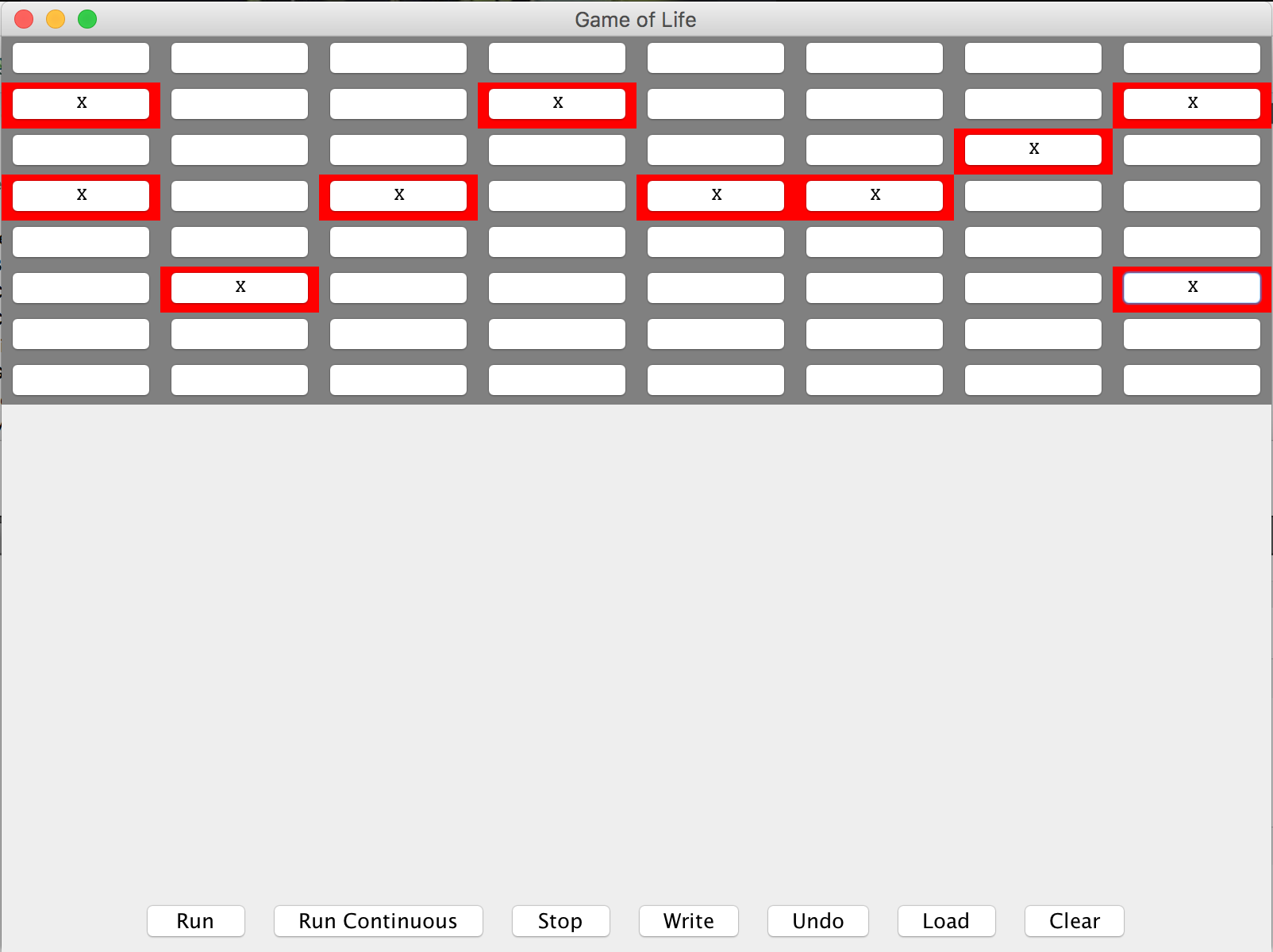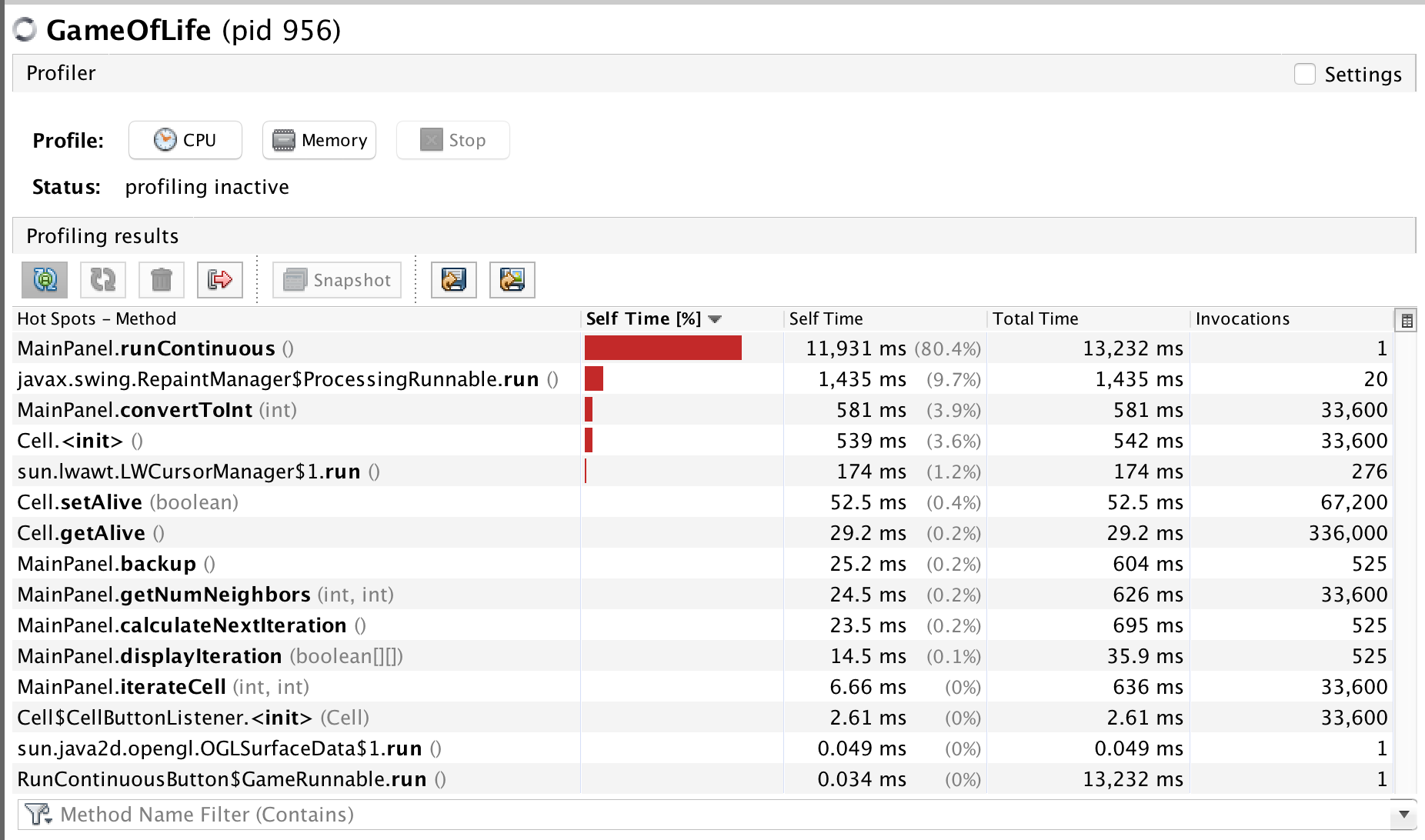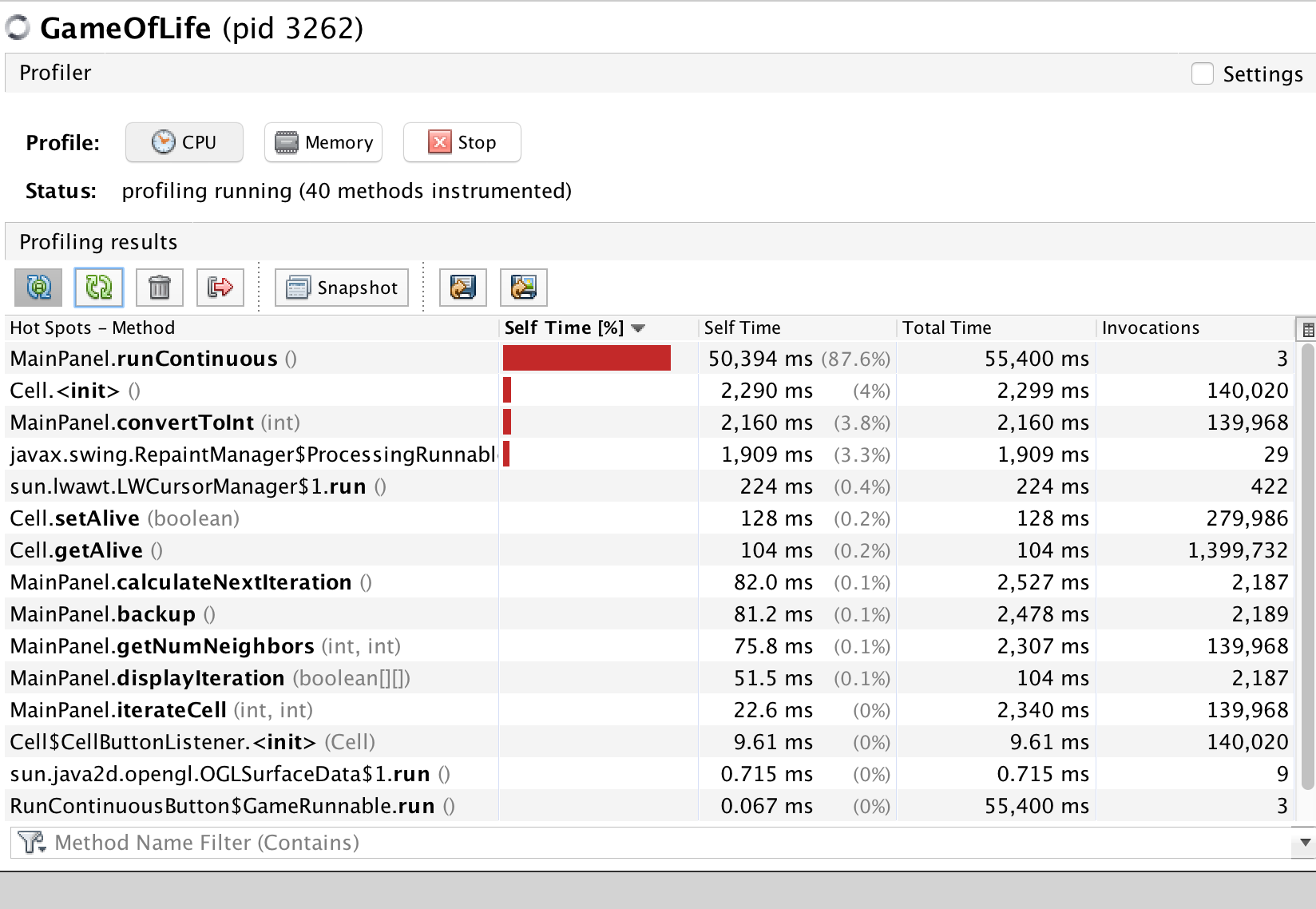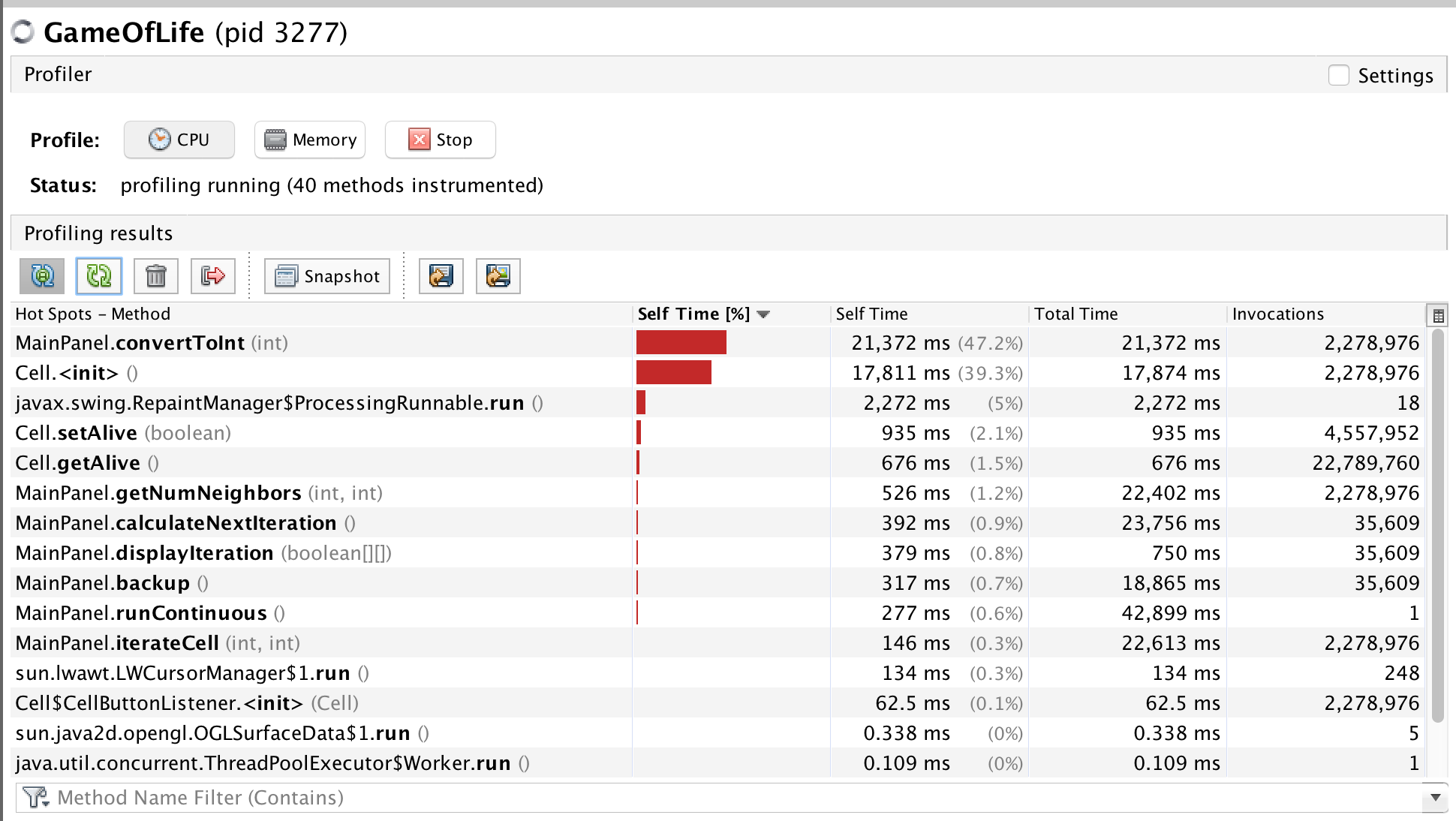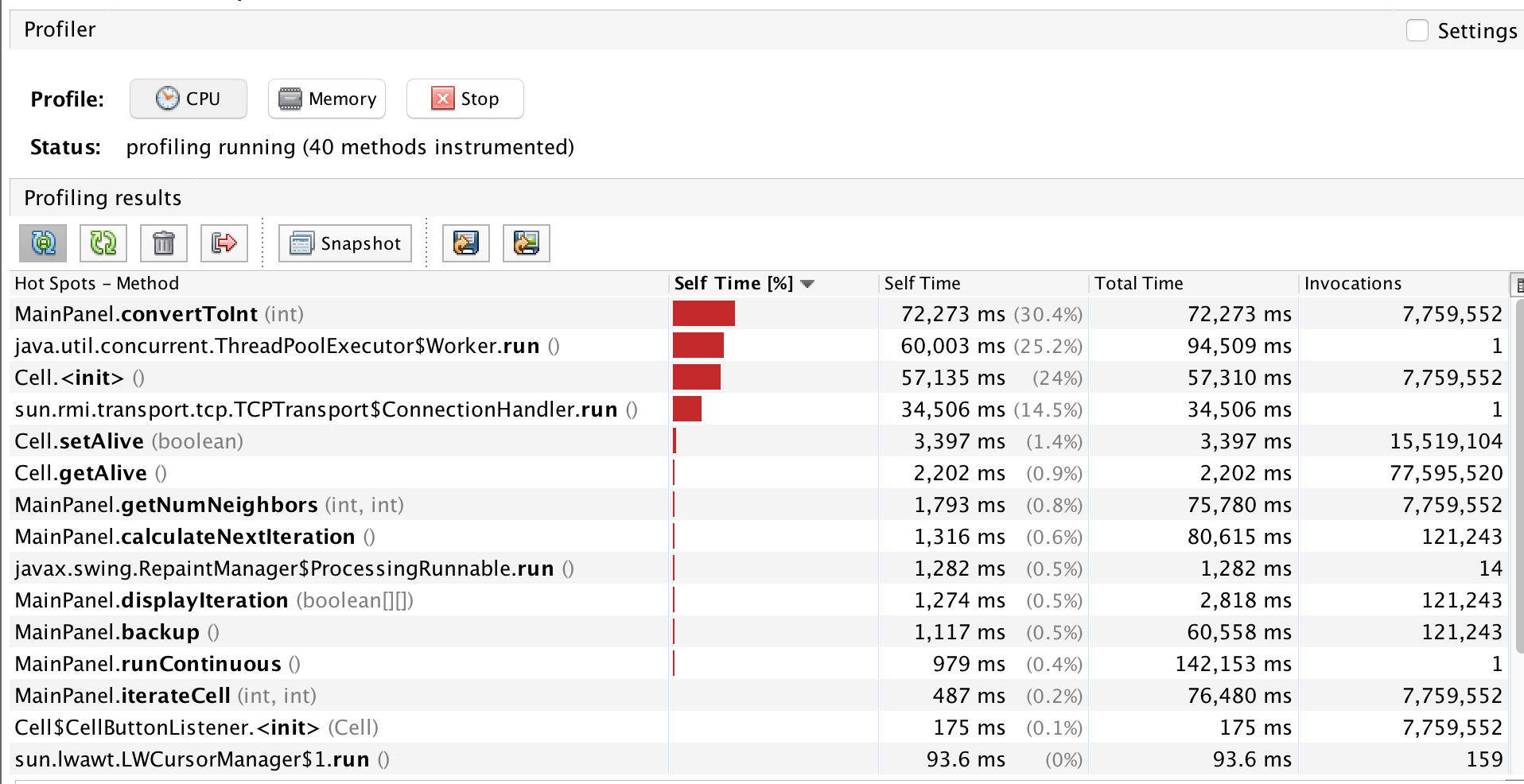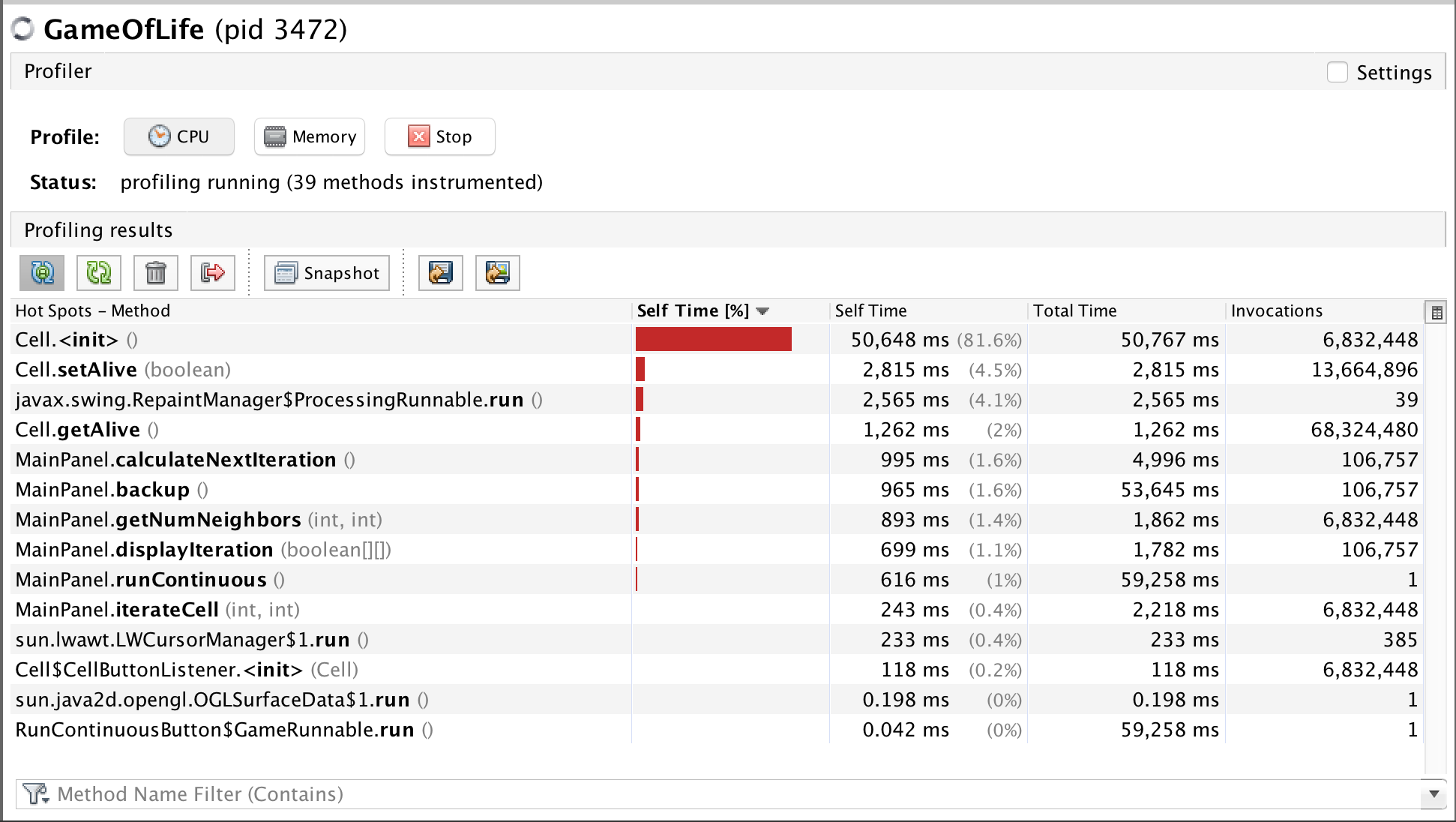Panel Initial Status
VisualVM Profiler indicated that top hotspot
MainPanel.convertToInt(int)
private int convertToInt(int x) {
int c = 0;
String padding = "0";
while (c < _r) {
String l = new String("0");
padding += l;
c++;
}
String n = padding + String.valueOf(x);
int q = Integer.parseInt(n);
return q;
}Original method above takes around 40% of CPU usage when running continuously. In original convertToInt(int) method, there is a while loop that create a new string "0" in each iteration and use + sign to append this new zero to padding.
Issue: in Java,
+is not efficient to concatenate Strings in accumulative way, it is better to useStringBuilder.append()method.
Modification
private int convertToInt(int x) {
int c = 0;
StringBuilder padding = new StringBuilder("0"); // use `StringBuilder` instead of `new String()`
while (c < _r) {
padding.append("0");
c++;
}
String n = padding.toString() + String.valueOf(x); // continue use String
int q = Integer.parseInt(n);
return q;
}Refactoring Result
Pinning Test
After I improved the performance of
MainPanel.convertToInt(int), the profiling result shows that the next problem isMainPanel.runContinuous()
public void runContinuous() {
_running = true;
while (_running) {
System.out.println("Running...");
int origR = _r;
try {
Thread.sleep(20);
} catch (InterruptedException iex) { }
for (int j=0; j < _maxCount; j++) {
_r += (j % _size) % _maxCount;
_r += _maxCount;
}
_r = origR;
backup();
calculateNextIteration();
}
}After I review the code, I found the part of code in the method did not performing any role in the execution. It is just updating _r and set thread to rest, but later on the _r are converted back to the original varibale. And since it put the thread to sleep it slows the whole process and consumes much CPU usage. So I commented out the unnecessary code. The method after refactoring looks like:
public void runContinuous() {
_running = true;
while (_running) {
System.out.println("Running...");
/**
int origR = _r;
try {
Thread.sleep(20);
} catch (InterruptedException iex) { }
for (int j=0; j < _maxCount; j++) {
_r += (j % _size) % _maxCount;
_r += _maxCount;
}
_r = origR;
*/
backup();
calculateNextIteration();
}
}Before refactoring
After refactoring
Pinning Test
I did not write unit test for this function, since the method do not have return method and the justification of the modification can be proved by follow the logic of the code in the method. Also, the change does not damage any function of the game.
public int getNumNeighbors(int x, int y) {
int size = _size;
int leftX = (x - 1) % size;
int rightX = (x + 1) % size;
int upY = (y - 1) % size;
int downY = (y + 1) % size;
if (leftX == -1) { leftX = size - 1; }
if (rightX == -1) { rightX = size - 1; }
if (upY == -1) { upY = size - 1; }
if (downY == -1) { downY = size - 1; }
int numNeighbors = 0;
if (_cells[leftX][upY].getAlive()) { numNeighbors++; }
if (_cells[leftX][downY].getAlive()) { numNeighbors++; }
if (_cells[leftX][y].getAlive()) { numNeighbors++; }
if (_cells[rightX][upY].getAlive()) { numNeighbors++; }
if (_cells[rightX][downY].getAlive()) { numNeighbors++; }
if (_cells[rightX][y].getAlive()) { numNeighbors++; }
if (_cells[x][upY].getAlive()) { numNeighbors++; }
if (_cells[x][downY].getAlive()) { numNeighbors++; }
return convertToInt(numNeighbors);
}After I refactored run continously, I find the profiling indicate that MainPanel.convertToInt(int) is again becoming the top CPU comsumer in the program. I wondered the reason and after checking the code I found method MainPanel.getNumNeighbors(int x, int y) calls convertToInt(int) in the return statement. After I check the code, I found this call is actually unnecessary since the variable numNeighbors is already a int type, there is no need to use another method to convert to int. So, instead of using convertToInt(int) method in return statement, it can simplily return numNeighbors directly.
public int getNumNeighbors(int x, int y) {
int size = _size;
int leftX = (x - 1) % size;
int rightX = (x + 1) % size;
int upY = (y - 1) % size;
int downY = (y + 1) % size;
if (leftX == -1) { leftX = size - 1; }
if (rightX == -1) { rightX = size - 1; }
if (upY == -1) { upY = size - 1; }
if (downY == -1) { downY = size - 1; }
int numNeighbors = 0;
if (_cells[leftX][upY].getAlive()) { numNeighbors++; }
if (_cells[leftX][downY].getAlive()) { numNeighbors++; }
if (_cells[leftX][y].getAlive()) { numNeighbors++; }
if (_cells[rightX][upY].getAlive()) { numNeighbors++; }
if (_cells[rightX][downY].getAlive()) { numNeighbors++; }
if (_cells[rightX][y].getAlive()) { numNeighbors++; }
if (_cells[x][upY].getAlive()) { numNeighbors++; }
if (_cells[x][downY].getAlive()) { numNeighbors++; }
return numNeighbors; // changes here
}Before refactoring
New Result shows that under same initial board the CPU usage of MainPanel.convertToInt(int) method is greatly diminished, from 40% (previous) to 3.9% (current). Which gives justification for this modification.
After refactoring
Pinning Test
Since the the part I modified in getNumNeighbors method is on the return statement, and all other part of the code depend on other varibles, in order to unit test the method, I create a fake method that mock the behavior of getNumNeighbors() but not the same: 'Fake' method of getNumNeighbors, and I use this method to do unit testing: Unit Test.
